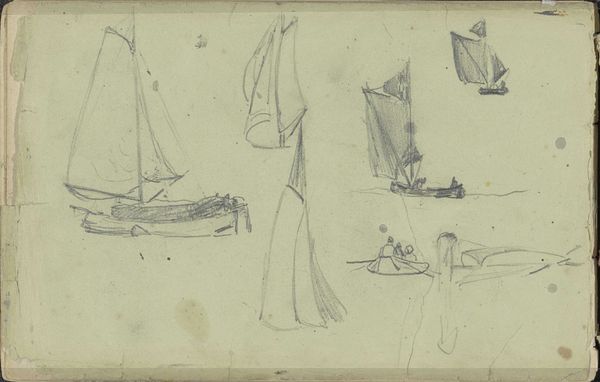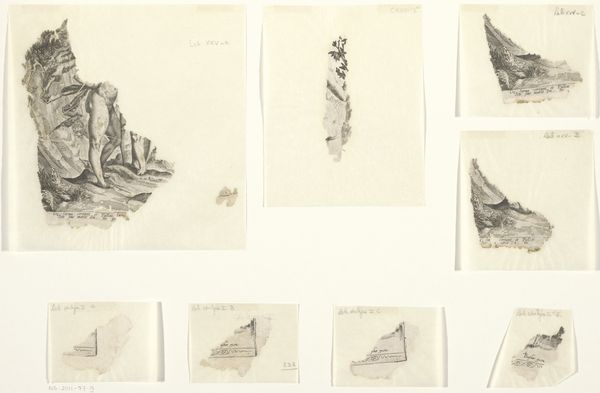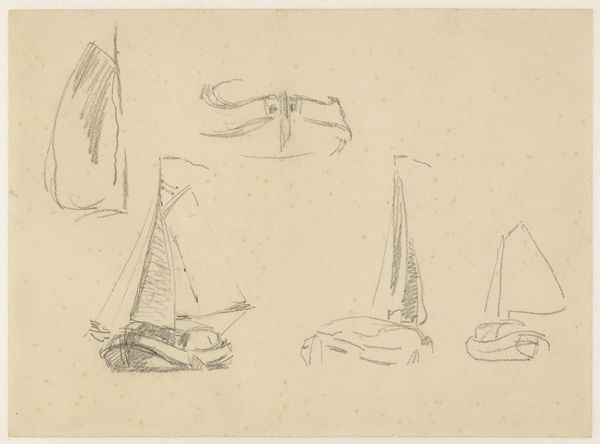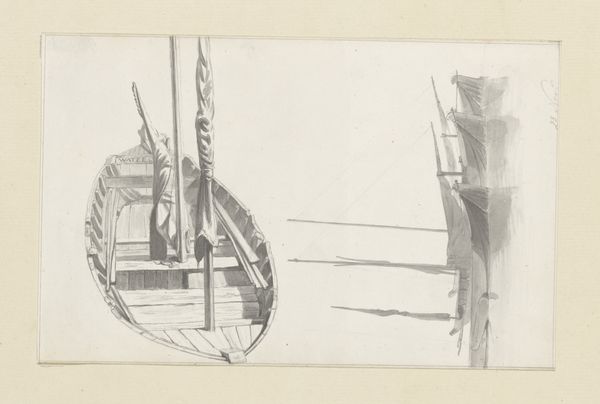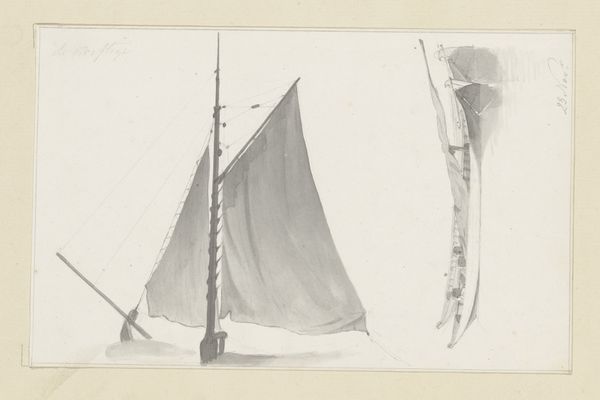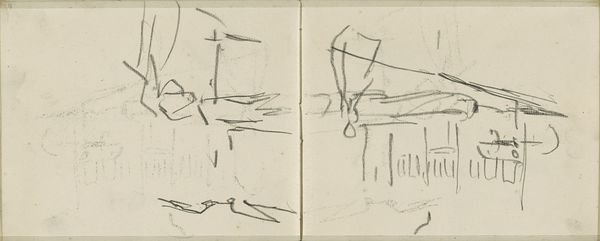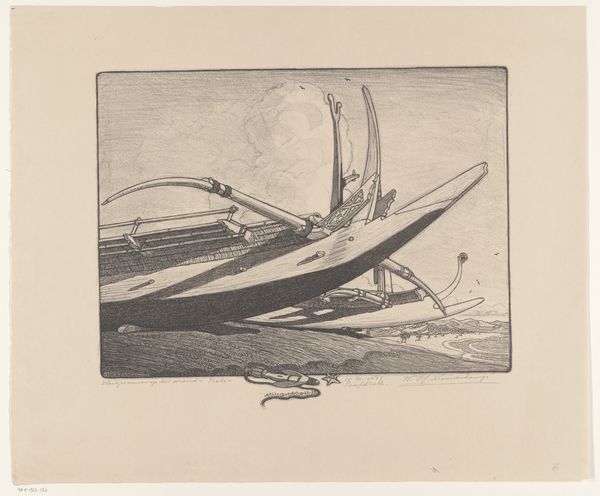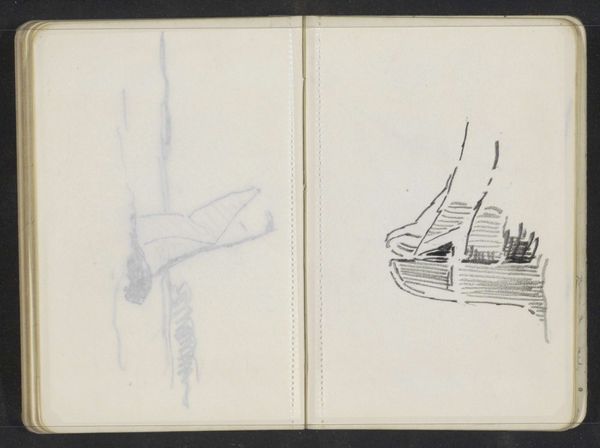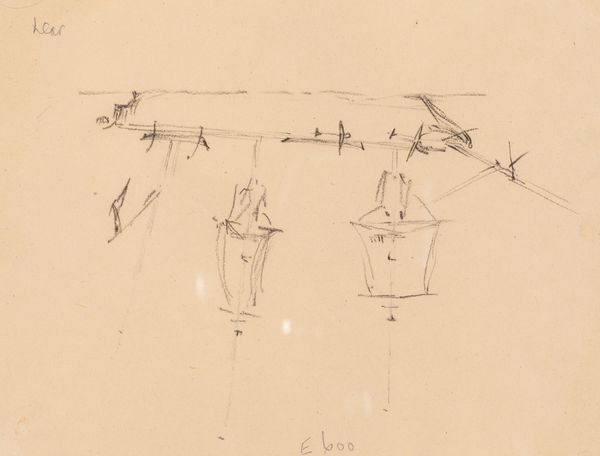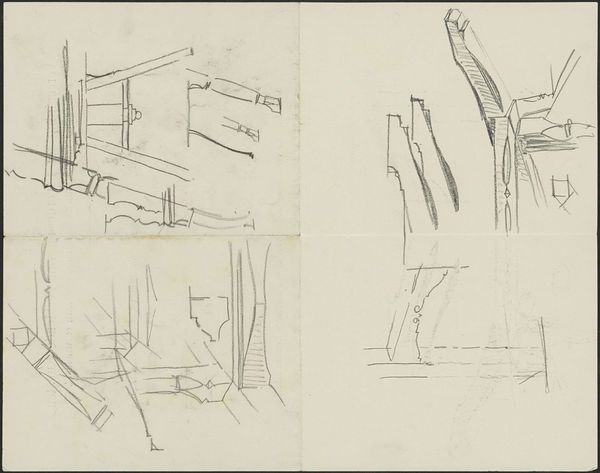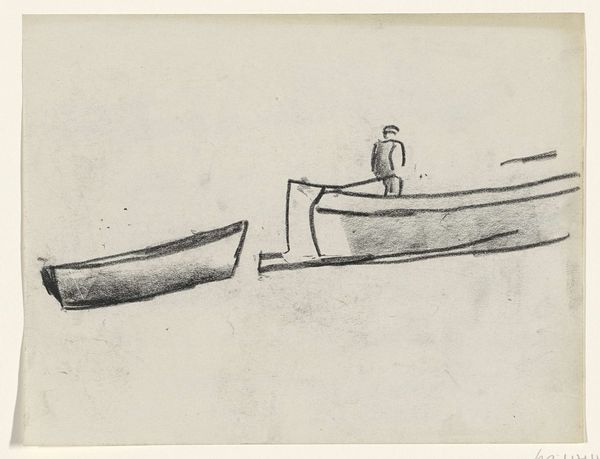
#
quirky sketch
#
hand drawn type
#
personal sketchbook
#
idea generation sketch
#
sketchwork
#
pen-ink sketch
#
sketchbook drawing
#
storyboard and sketchbook work
#
sketchbook art
#
initial sketch
Dimensions: height 80 mm, width 39 mm
Copyright: Rijks Museum: Open Domain
Curator: This intriguing pen-and-ink sketch, entitled "Menselijk bot met een afwijking," which translates to “Human bone with a deviation," is part of a sketchbook by Isaac Weissenbruch and dates sometime between 1836 and 1912. It currently resides here at the Rijksmuseum. Editor: Immediately, it strikes me as strangely…organic, yet unsettling. The composition feels fragmented, like a visual record of different investigations all occurring at once. The contrast between the precision of the steamship and the almost grotesque bone structure creates a tense atmosphere. Curator: That tension speaks to a larger dialogue within the period. Weissenbruch lived during a time of rapid industrialization in the Netherlands. His landscape work, for which he's best known, often reflects this changing world, often through its impact on the human experience. This bone fragment… I wonder if it’s meant to subtly critique the devaluing of the body amidst that shift. Editor: Perhaps, or it’s also impossible to overlook the visual language itself. The use of line, especially in the ship, communicates technological advancement in a very legible fashion, but the rendering of the bone feels almost… violated. Curator: Absolutely. Considering it’s part of a sketchbook, could it be exploring notions of the medical gaze, a symptom, perhaps, of larger cultural anxieties around progress, especially around disability? Editor: It's very possible. Even the isolated placement of the diagram creates a visual representation of othering. You see something and instantly want to examine it closer while at the same time you are repulsed. The 'a', 'b' and 'c' annotations seem almost clinical, denying the subject an identity. It seems to be inviting dissection and categorization. Curator: It certainly compels us to consider Weissenbruch's intention beyond just objective anatomical study. Perhaps this wasn't meant for public viewing at all. These sketchbooks were spaces where social and personal observations collided. Editor: Precisely. We witness a fragmented reality reflecting social commentary, that even through seemingly mundane observations, critiques emerge that have modern context. It provides so much for intersectional understandings. Curator: I agree completely. It is also important to know more of Issac’s place in social dynamics for us to analyze further, since even today in 2024 the impact is as significant, if not even more amplified than ever.
Comments
No comments
Be the first to comment and join the conversation on the ultimate creative platform.
